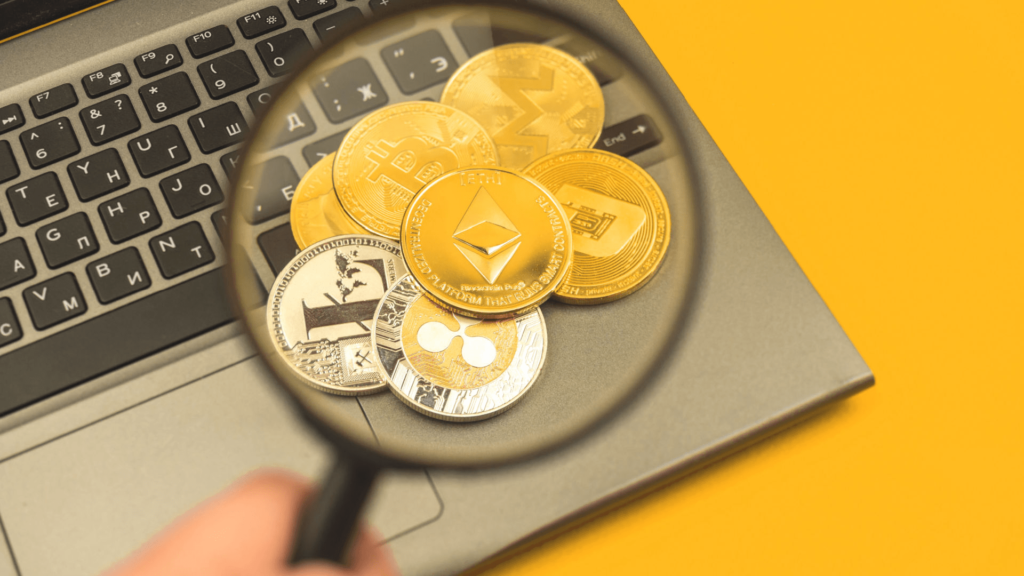The cryptocurrency market has evolved dramatically since Bitcoin’s inception, creating numerous opportunities for investors to explore beyond the original digital currency. For newcomers seeking effective altcoin investment strategies for beginners, understanding the landscape of alternative cryptocurrencies can seem overwhelming yet incredibly rewarding. This comprehensive guide will walk you through proven strategies, essential concepts, and practical steps to build a successful altcoin portfolio while managing risks effectively.
Alternative cryptocurrencies, commonly known as altcoins, represent any digital currency other than Bitcoin. With thousands of altcoins available today, from established players like Ethereum and Cardano to emerging projects with innovative use cases, the potential for significant returns attracts both seasoned traders and complete beginners. However, success in altcoin investing requires more than luck—it demands strategic thinking, thorough research, and disciplined execution.
Understanding Altcoins The Foundation of Smart Investment
Before diving into specific altcoin investment strategies for beginners, it’s crucial to understand what sets altcoins apart from Bitcoin and traditional investments. Altcoins encompass a diverse range of digital assets, including smart contract platforms, decentralized finance (DeFi) tokens, non-fungible token (NFT) ecosystems, and utility tokens that power various blockchain applications.
The altcoin market operates 24/7, offering unprecedented liquidity and volatility compared to traditional markets. This constant activity creates opportunities for significant gains but also presents substantial risks that beginners must carefully consider. Understanding market dynamics, technological fundamentals, and adoption trends forms the bedrock of successful altcoin investing.
Most successful altcoin investors focus on projects with strong fundamentals: active development teams, clear use cases, growing communities, and real-world applications. These factors often distinguish long-term winners from short-lived speculative bubbles that frequently emerge in the crypto space.
Essential Research Methods for Altcoin Selection
Effective research separates successful altcoin investors from those who rely on speculation and market hype. Fundamental analysis involves examining a project’s whitepaper, team credentials, partnerships, roadmap progress, and tokenomics. Technical analysis focuses on price charts, trading volumes, and market sentiment indicators to identify entry and exit points.
Suggested Internal Link: [Link to: “How to Read Cryptocurrency Whitepapers: A Beginner’s Guide”]
When evaluating altcoins, consider the problem each project aims to solve and whether their proposed solution offers genuine advantages over existing alternatives. Projects addressing real-world issues with proven traction typically demonstrate stronger long-term potential than purely speculative ventures.
Community engagement serves as another crucial indicator of project health. Active social media presence, regular development updates, and growing user bases often correlate with sustainable price appreciation. However, be wary of artificial hype or coordinated promotional campaigns that may inflate interest without underlying substance.
Building Your First Altcoin Portfolio Diversification Strategies

Portfolio diversification remains fundamental to successful altcoin investing, especially for beginners who may lack experience identifying individual winners. Rather than concentrating investments in single projects, spreading capital across multiple sectors and risk levels helps protect against significant losses while maintaining upside potential.
A balanced beginner portfolio might allocate 40-50% to established altcoins like Ethereum, Cardano, or Solana, which have proven track records and substantial market capitalizations. Another 30-40% could target mid-cap altcoins with strong fundamentals and growth potential, while reserving 10-20% for smaller, higher-risk projects that could deliver exceptional returns.
Consider sector diversification by including altcoins from different categories: smart contract platforms, DeFi protocols, gaming tokens, storage solutions, and payment systems. This approach reduces correlation risk while exposing your portfolio to various growth opportunities across the expanding cryptocurrency ecosystem.
Geographic and technological diversification also merit consideration. Including altcoins built on different blockchain architectures or originating from various regions can provide additional protection against localized risks or technological vulnerabilities.
Risk Management: Protecting Your Investment Capital
Effective risk management distinguishes successful long-term investors from those who experience devastating losses during market downturns. Never invest more than you can afford to lose entirely, as altcoin markets can be extremely volatile and unpredictable.
Position sizing plays a crucial role in risk management. Rather than making large bets on individual altcoins, consider limiting single positions to 5-10% of your total portfolio. This approach allows you to remain invested even if several positions perform poorly while benefiting from winners that exceed expectations.
Stop-loss orders can help limit downside risk by automatically selling positions when they decline to predetermined levels. However, cryptocurrency markets’ volatility can trigger stop-losses prematurely, so use them judiciously and consider wider margins than you might use in traditional markets..
Top Altcoin Investment Strategies for Beginners
HODLing Strategy Long-Term Value Accumulation
The “HODL” strategy involves buying quality altcoins and holding them for extended periods, typically years, regardless of short-term price fluctuations. This approach works well for beginners who lack time for active trading or prefer passive investment strategies.
Successful HODLing requires selecting altcoins with strong fundamentals, active development, and long-term growth potential. Focus on projects solving real problems with experienced teams and growing ecosystems. Ethereum’s transition to proof-of-stake, Cardano’s smart contract implementation, and Solana’s high-throughput blockchain exemplify the type of fundamental developments that reward patient investors.
Dollar-Cost Averaging (DCA): Reducing Timing Risk
Dollar-cost averaging involves making regular purchases regardless of price levels, spreading investment timing across multiple periods. This strategy reduces the impact of volatility while building positions gradually over time.
DCA works particularly well in volatile altcoin markets where timing perfect entries proves nearly impossible. By purchasing fixed dollar amounts weekly or monthly, you automatically buy more tokens when prices are low and fewer when prices are high, potentially improving your average purchase price over time.
Swing Trading: Capturing Medium-Term Movements
Swing trading involves holding positions for days to weeks, attempting to profit from medium-term price movements. This strategy requires more active management than HODLing but less intensive monitoring than day trading.
Successful swing trading combines technical analysis with fundamental research to identify entry and exit points. Look for altcoins experiencing temporary pullbacks despite positive long-term prospects, or those showing technical breakout patterns with strong volume confirmation.
Market Analysis and Timing Considerations

Understanding market cycles helps improve investment timing and strategy selection. Cryptocurrency markets typically experience four-year cycles related to Bitcoin halving events, with distinct phases of accumulation, growth, distribution, and decline.
During accumulation phases, quality altcoins often trade at discounted levels while smart money quietly builds positions. Growth phases see broader market participation and significant price appreciation across most altcoins. Distribution phases involve profit-taking by early investors, while decline phases shake out weak hands and reset valuations for new cycles.
Altcoin seasons, periods when alternative cryptocurrencies significantly outperform Bitcoin, typically occur during later stages of bull markets. Recognizing these patterns can help optimize allocation between Bitcoin and altcoins based on current market conditions.
Macro economic factors increasingly influence cryptocurrency markets, including inflation rates, central bank policies, regulatory developments, and institutional adoption trends. Staying informed about these broader influences helps contextualize altcoin performance within larger economic cycles.
Common Mistakes to Avoid in Altcoin Investing
Fear of missing out (FOMO) leads many beginners to chase rapidly rising prices, often resulting in poorly timed entries near market peaks. Develop patience and stick to predetermined investment criteria rather than making emotional decisions based on short-term price movements. Overconfidence following early successes can lead to increased risk-taking and larger position sizes. Remember that cryptocurrency markets can remain irrational longer than individual investors can remain solvent, so maintain disciplined risk management regardless of recent performance.
Neglecting tax implications represents another common oversight. Keep detailed records of all transactions, including dates, amounts, and purposes, as cryptocurrency gains are typically subject to capital gains taxation in most jurisdictions. Following influencers and social media “experts” without conducting independent research often leads to poor investment decisions. While social sentiment can influence short-term prices, fundamental value typically determines long-term performance.
Also Read: Best Cryptocurrency to Invest in 2025 Your Complete Investment Guide
Advanced Strategies for Growing Portfolios
As your experience and portfolio grow, consider incorporating more sophisticated strategies like yield farming, staking, and participating in decentralized finance protocols. These approaches can generate additional income from your altcoin holdings while potentially accessing exclusive investment opportunities.
Yield farming involves providing liquidity to decentralized exchanges or lending protocols in exchange for token rewards. While potentially lucrative, these strategies carry additional risks including smart contract vulnerabilities, impermanent loss, and token value fluctuations.
Staking allows holders of proof-of-stake altcoins to earn rewards by participating in network validation. This strategy provides passive income while supporting network security, though staked tokens typically require lock-up periods during which they cannot be traded.
Future Trends and Emerging Opportunities
The altcoin landscape continues evolving with emerging trends like Web3 integration, artificial intelligence applications, sustainable blockchain solutions, and cross-chain interoperability protocols. Staying informed about technological developments and adoption trends helps identify future investment opportunities.
Layer-2 scaling solutions, decentralized identity systems, and blockchain-based gaming represent growing sectors with significant potential for new altcoin projects. However, early-stage investments in emerging trends carry higher risks and require more extensive due diligence.
Regulatory clarity continues improving in many jurisdictions, potentially reducing uncertainty and encouraging institutional participation. This development could benefit established altcoins with compliant structures while potentially disadvantaging projects operating in regulatory gray areas.
Conclusion
Mastering altcoin investment strategies for beginners requires patience, discipline, and continuous learning. Success comes from thorough research, careful risk management, and maintaining a long-term perspective despite short-term market volatility. Start with small investments in established altcoins, gradually expanding your knowledge and portfolio as you gain experience.
Remember that cryptocurrency investing involves significant risks, and past performance never guarantees future results. Stay informed about market developments, regulatory changes, and technological advances that could impact your investments. Most importantly, never invest more than you can afford to lose, and always conduct your own research before making investment decisions.

